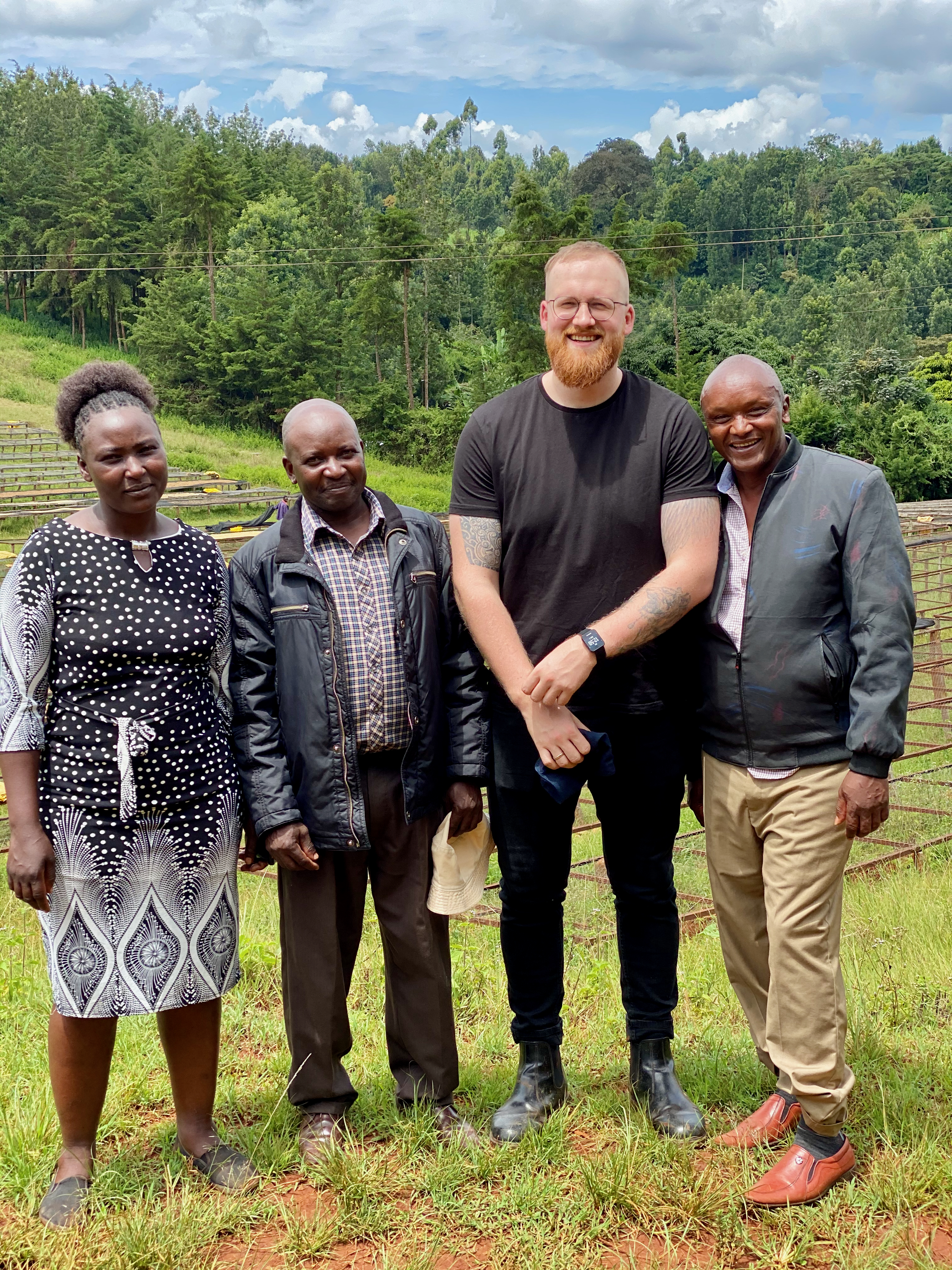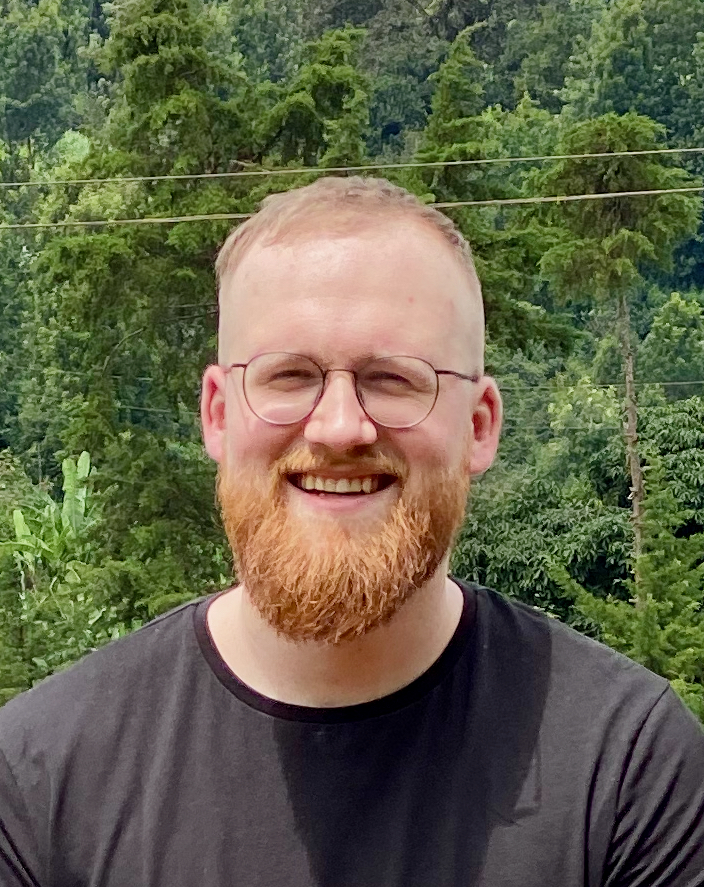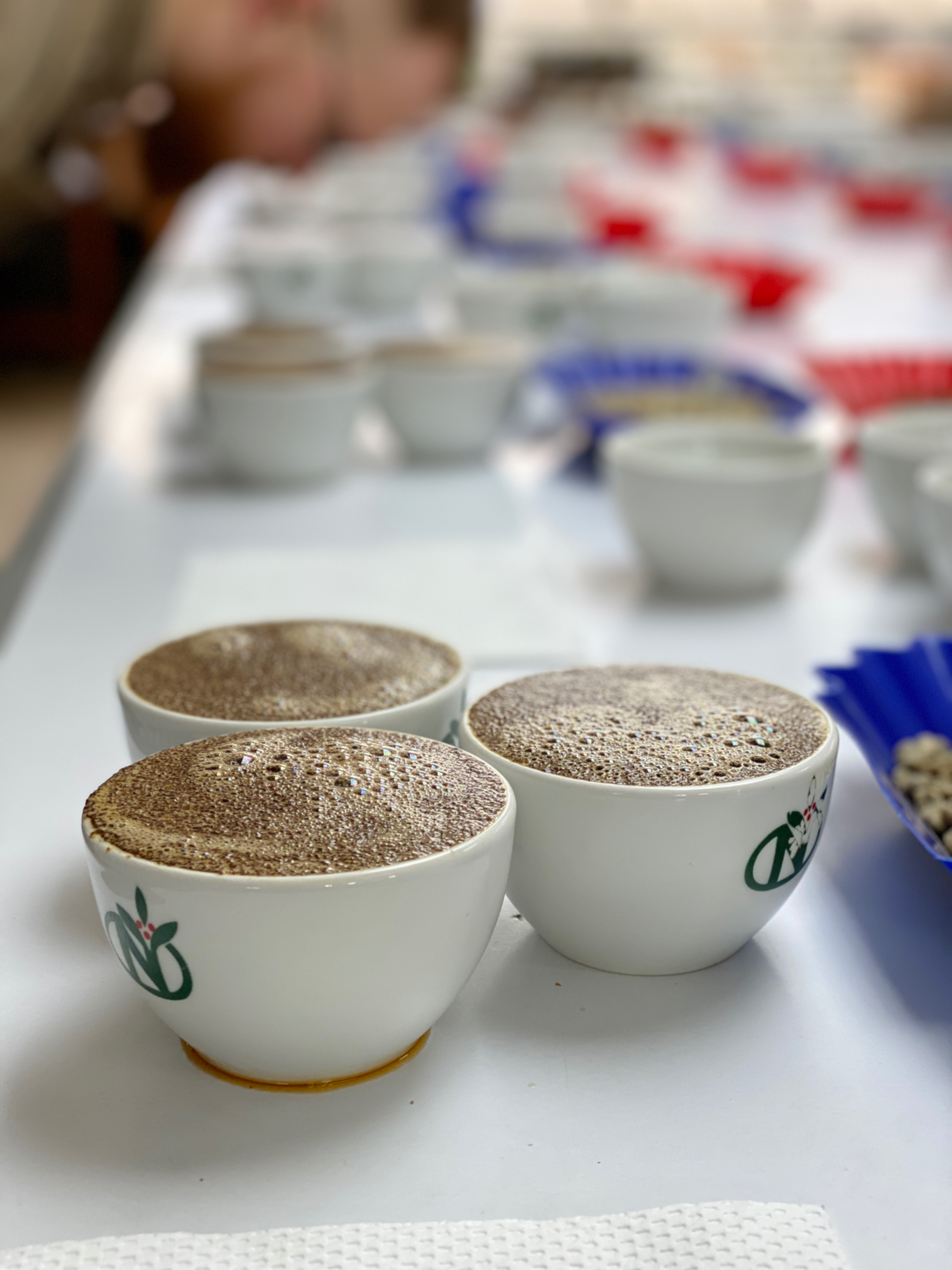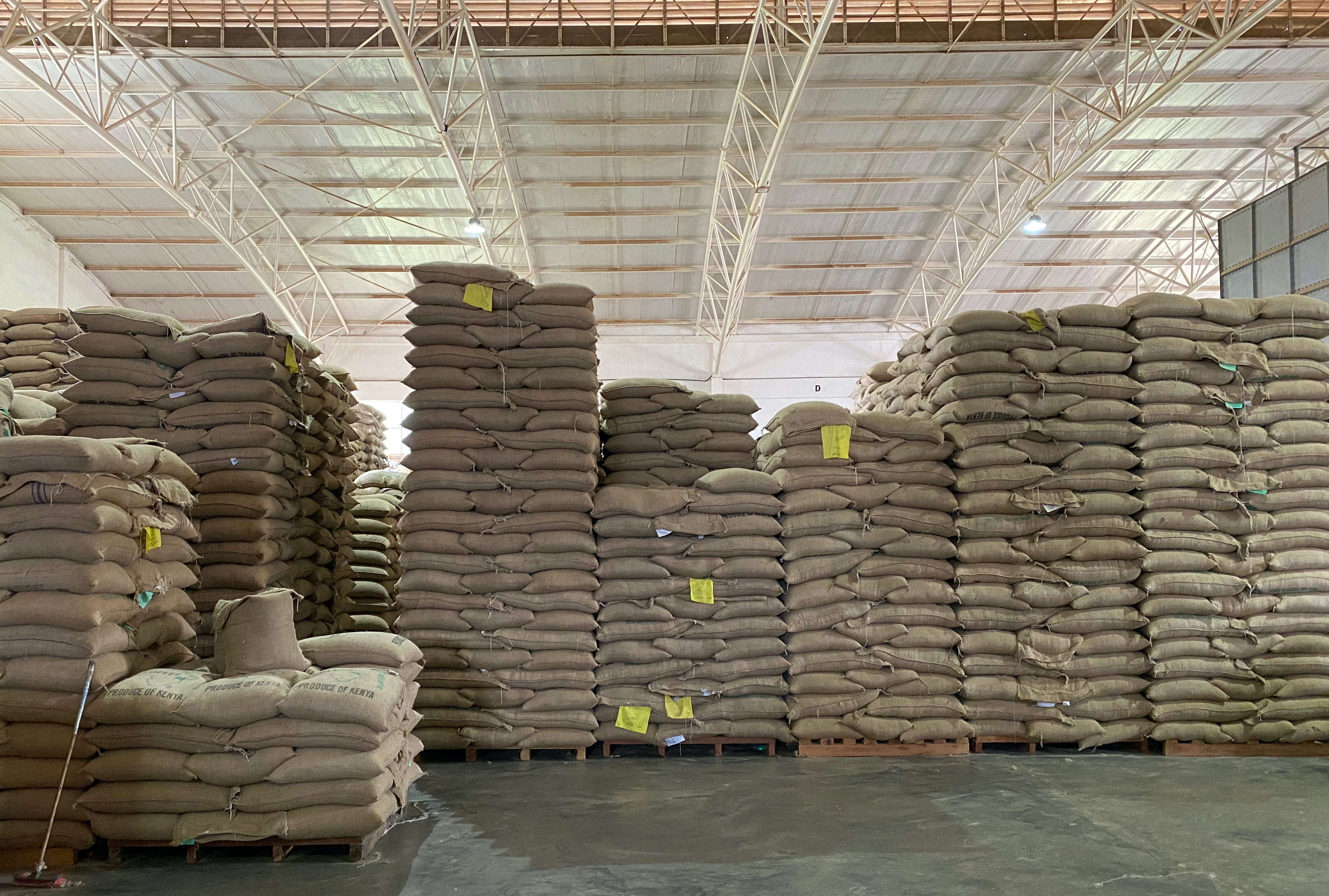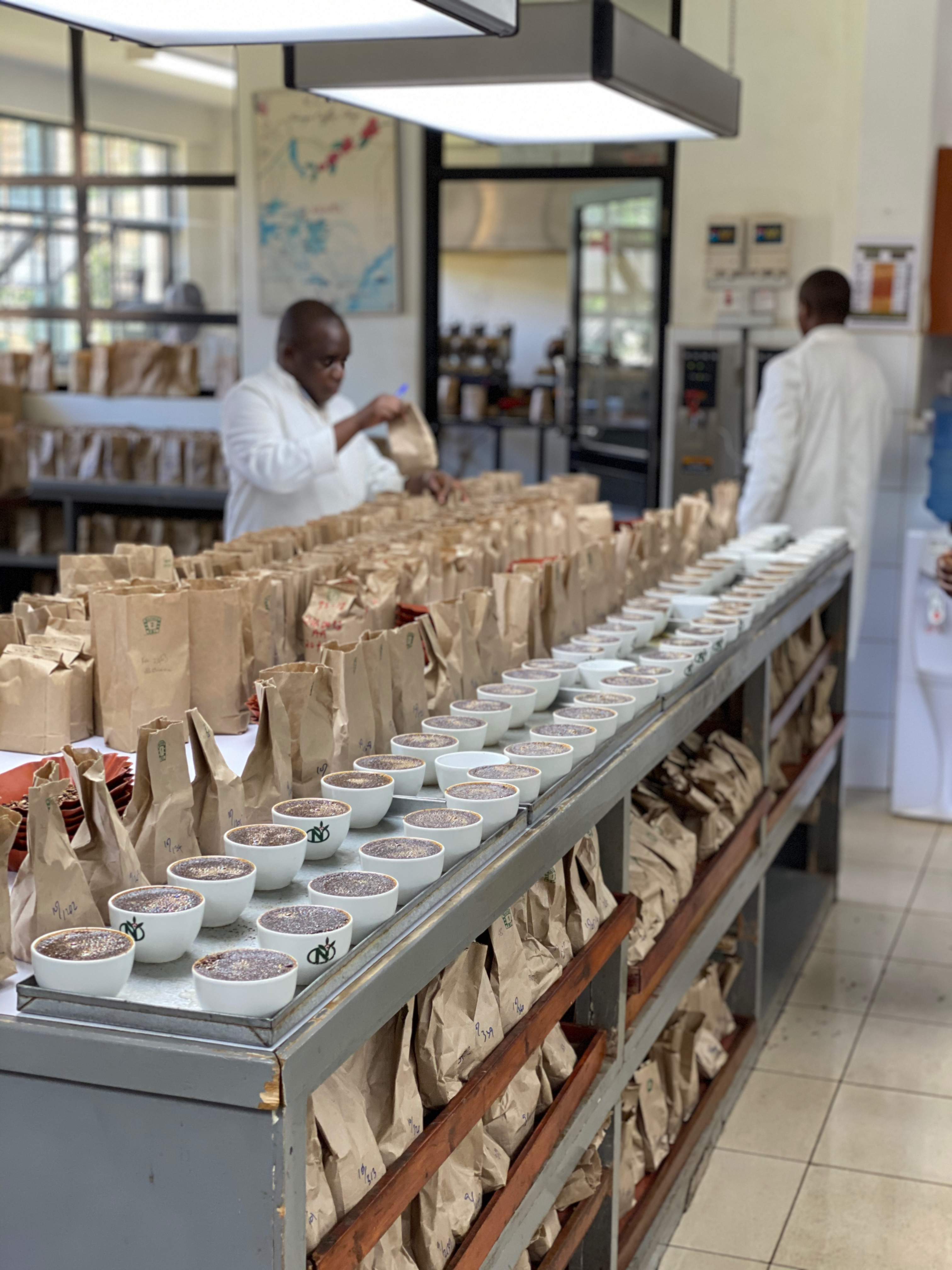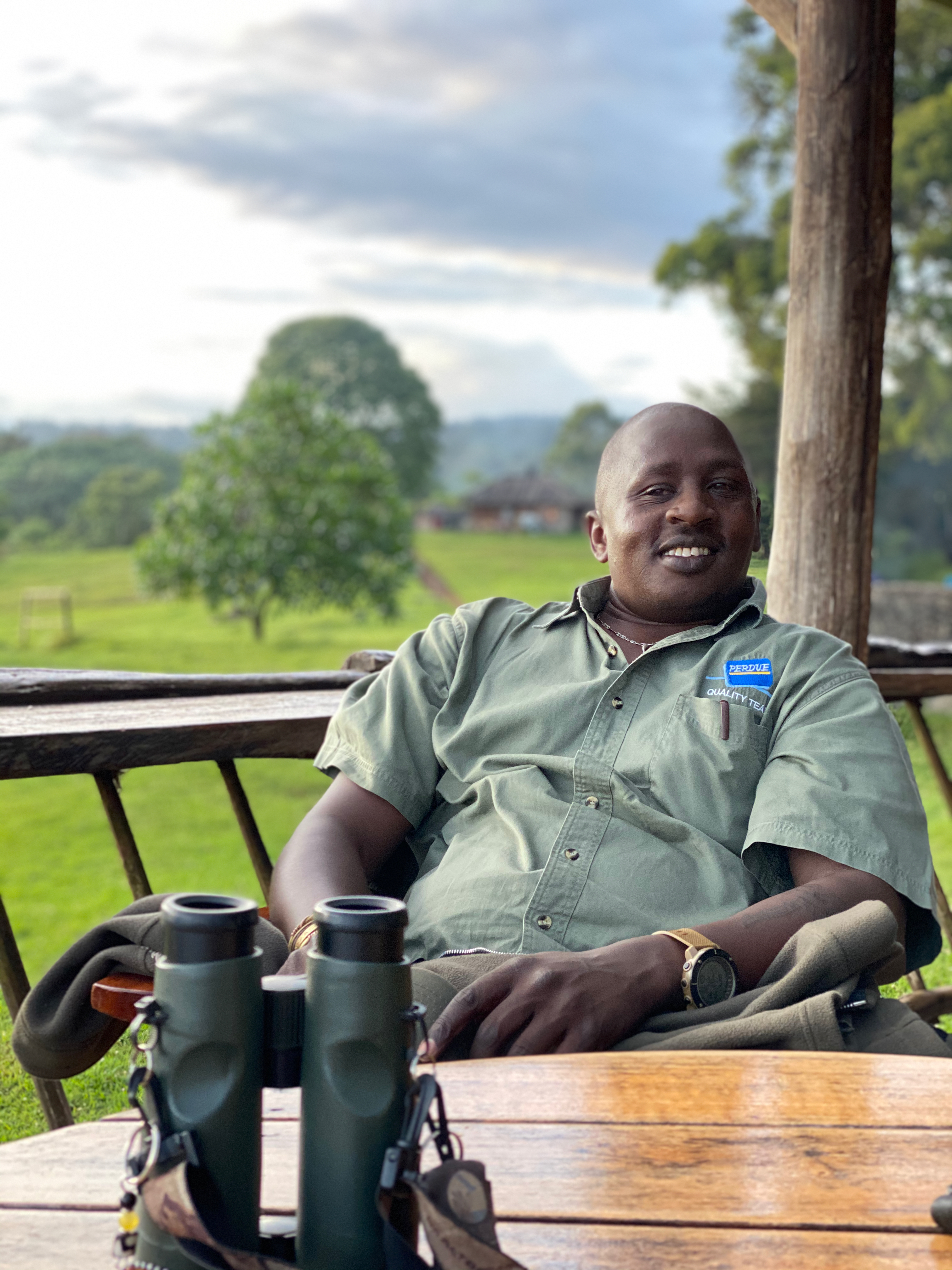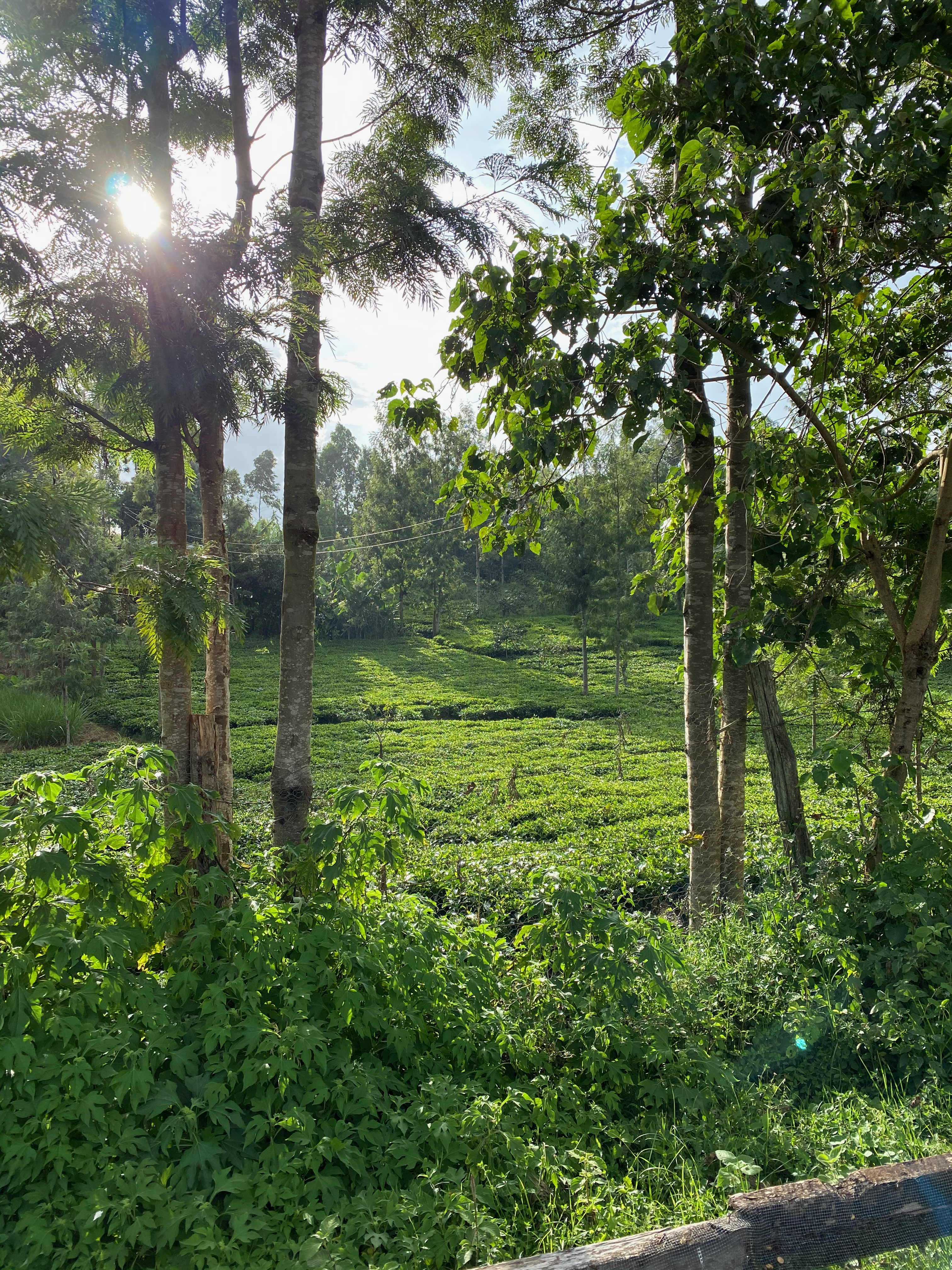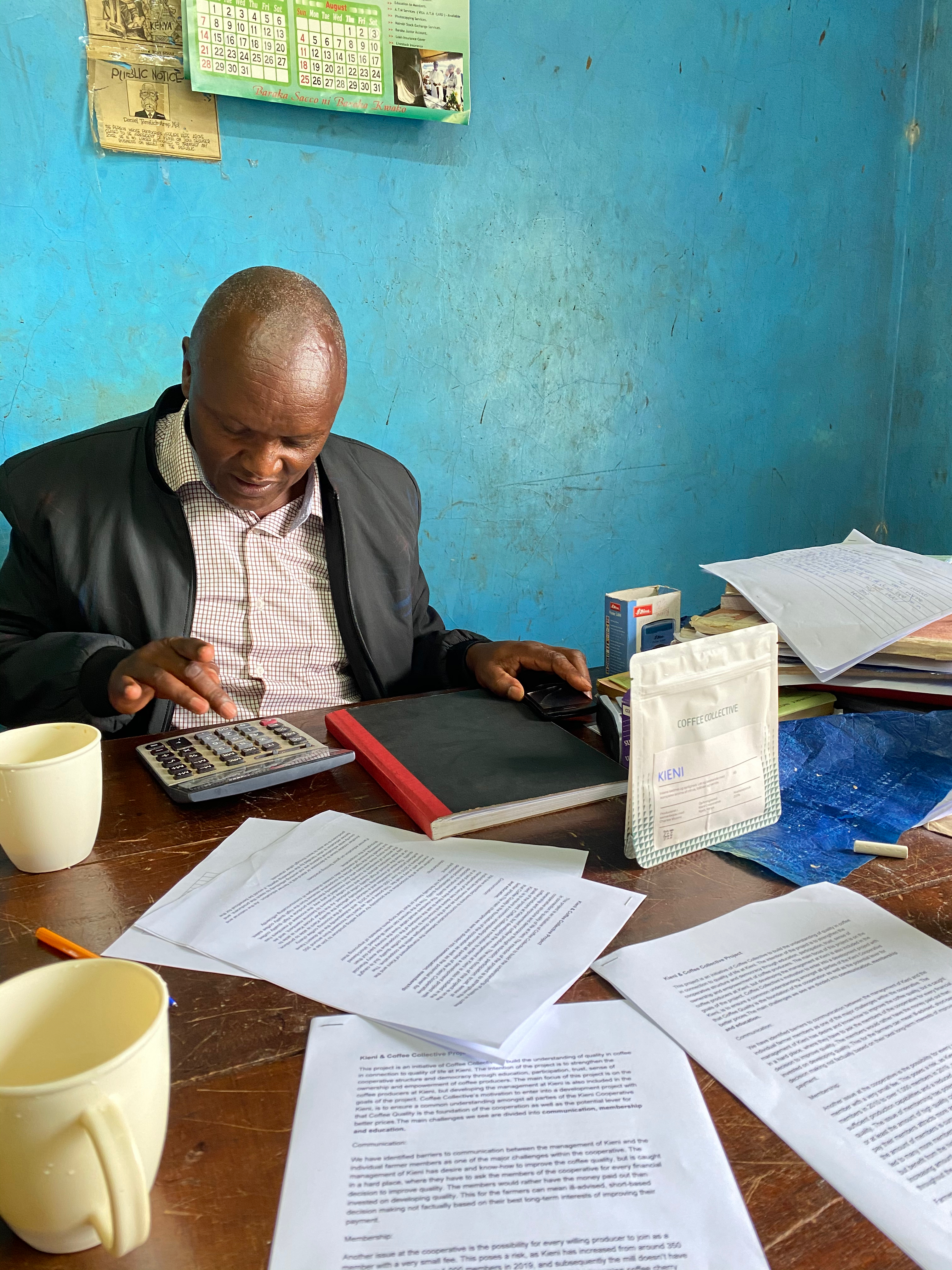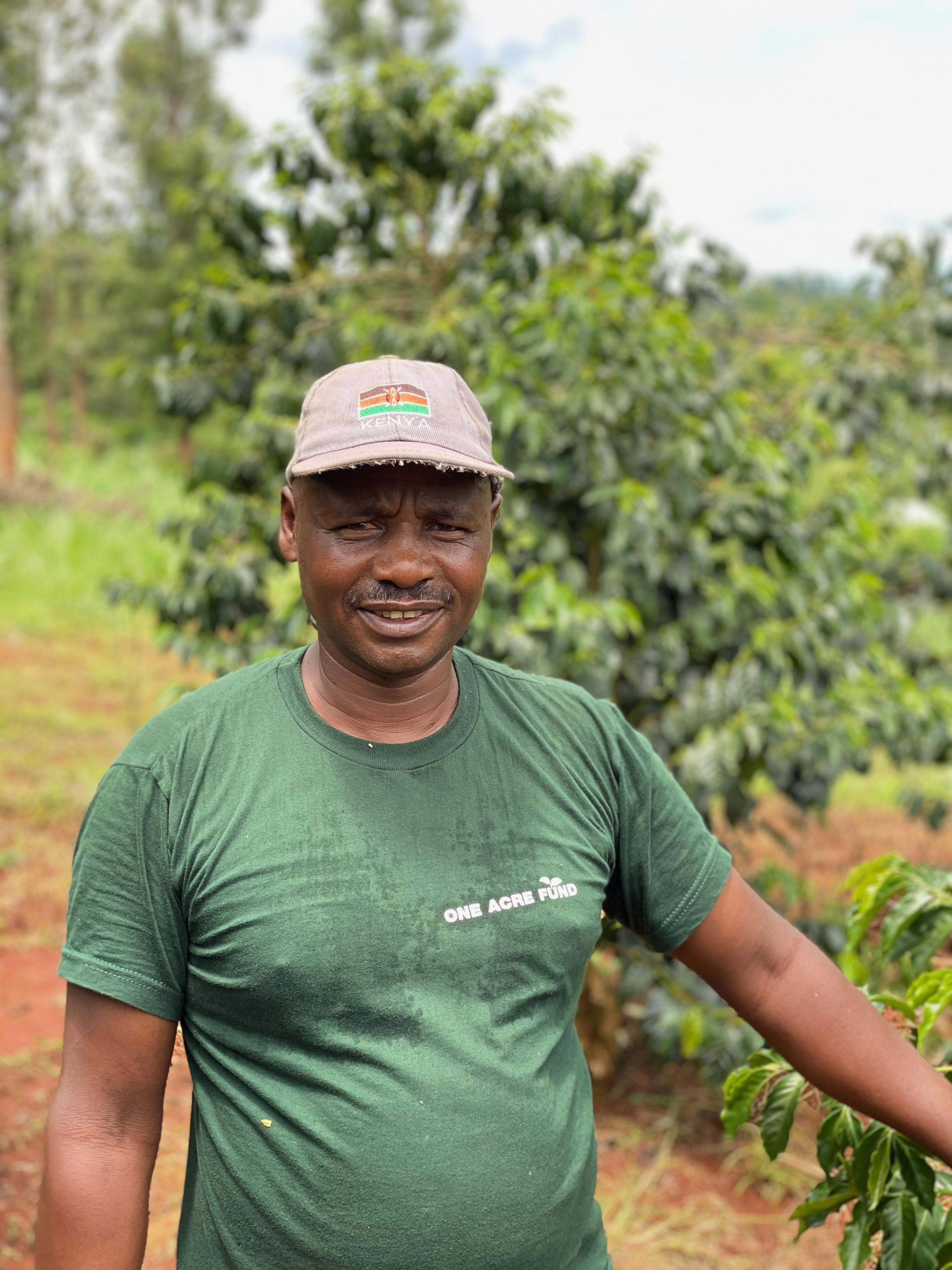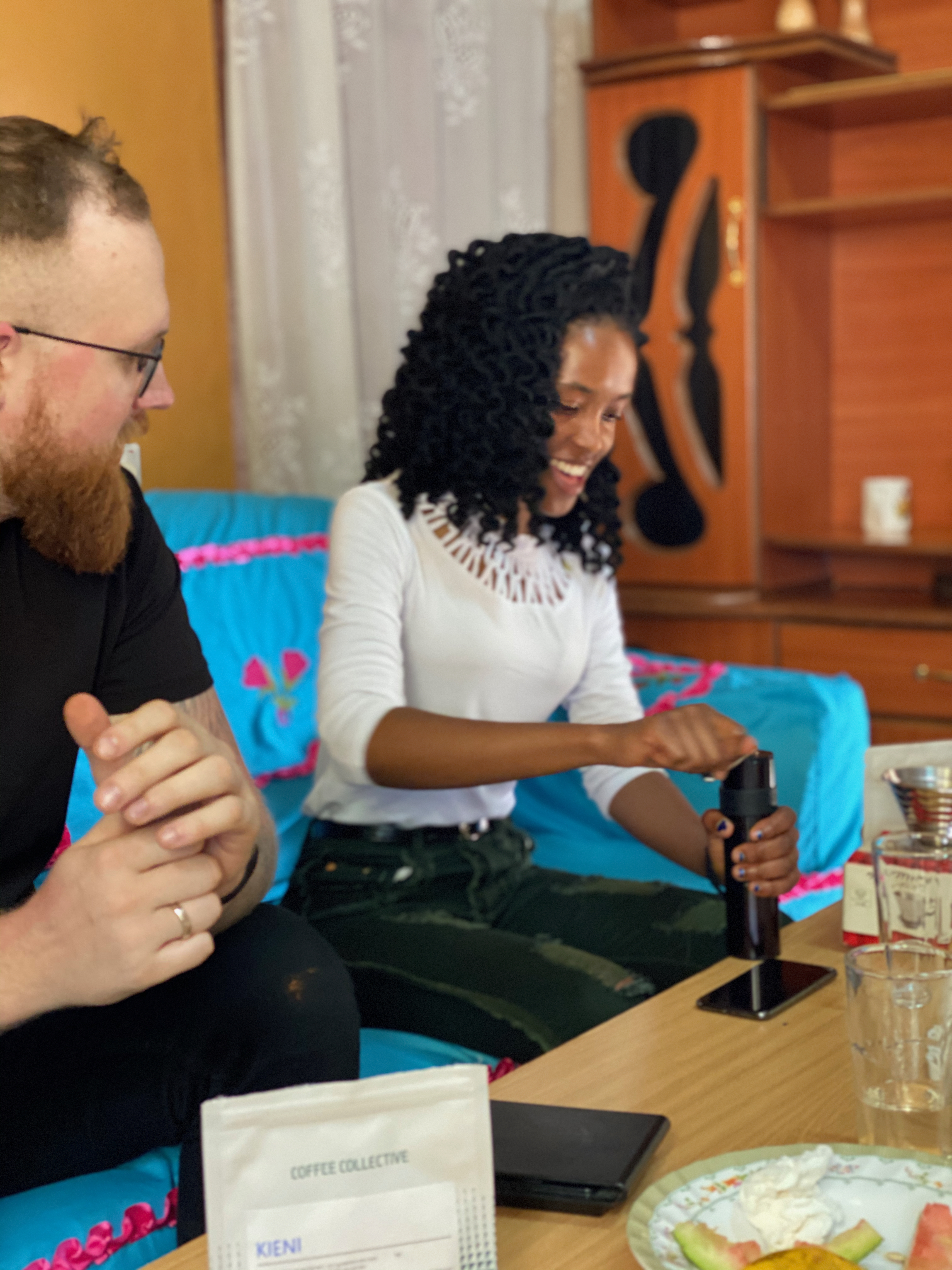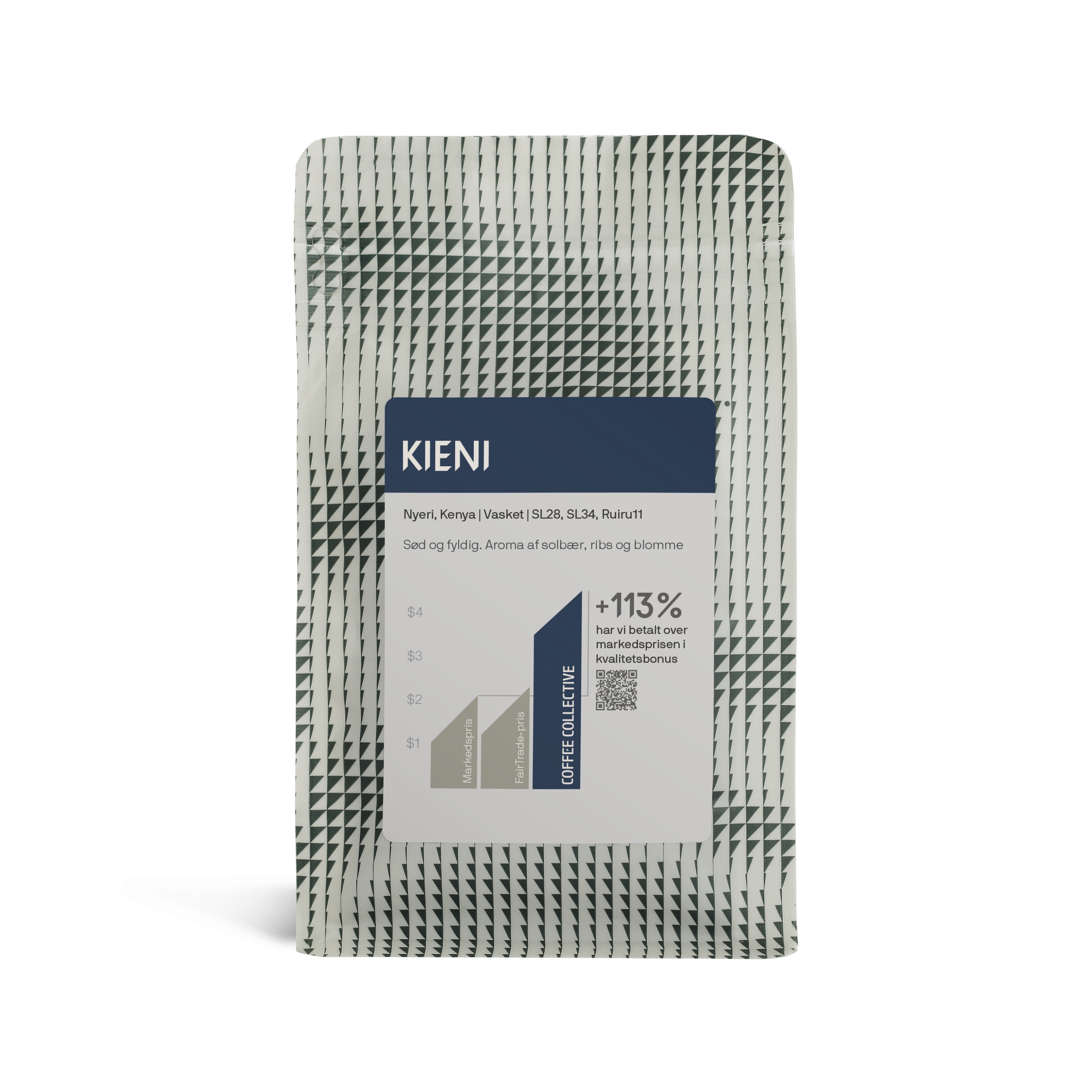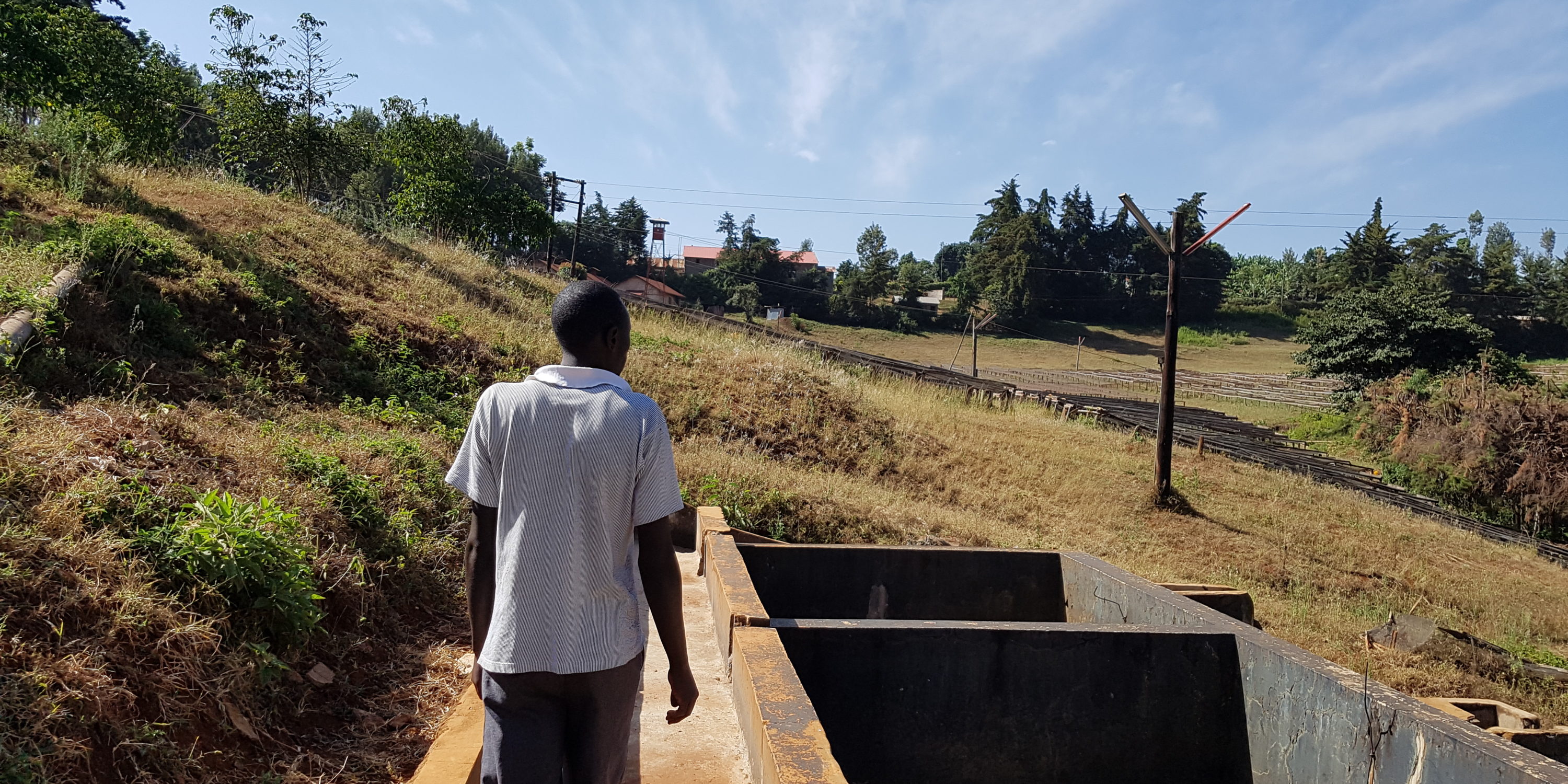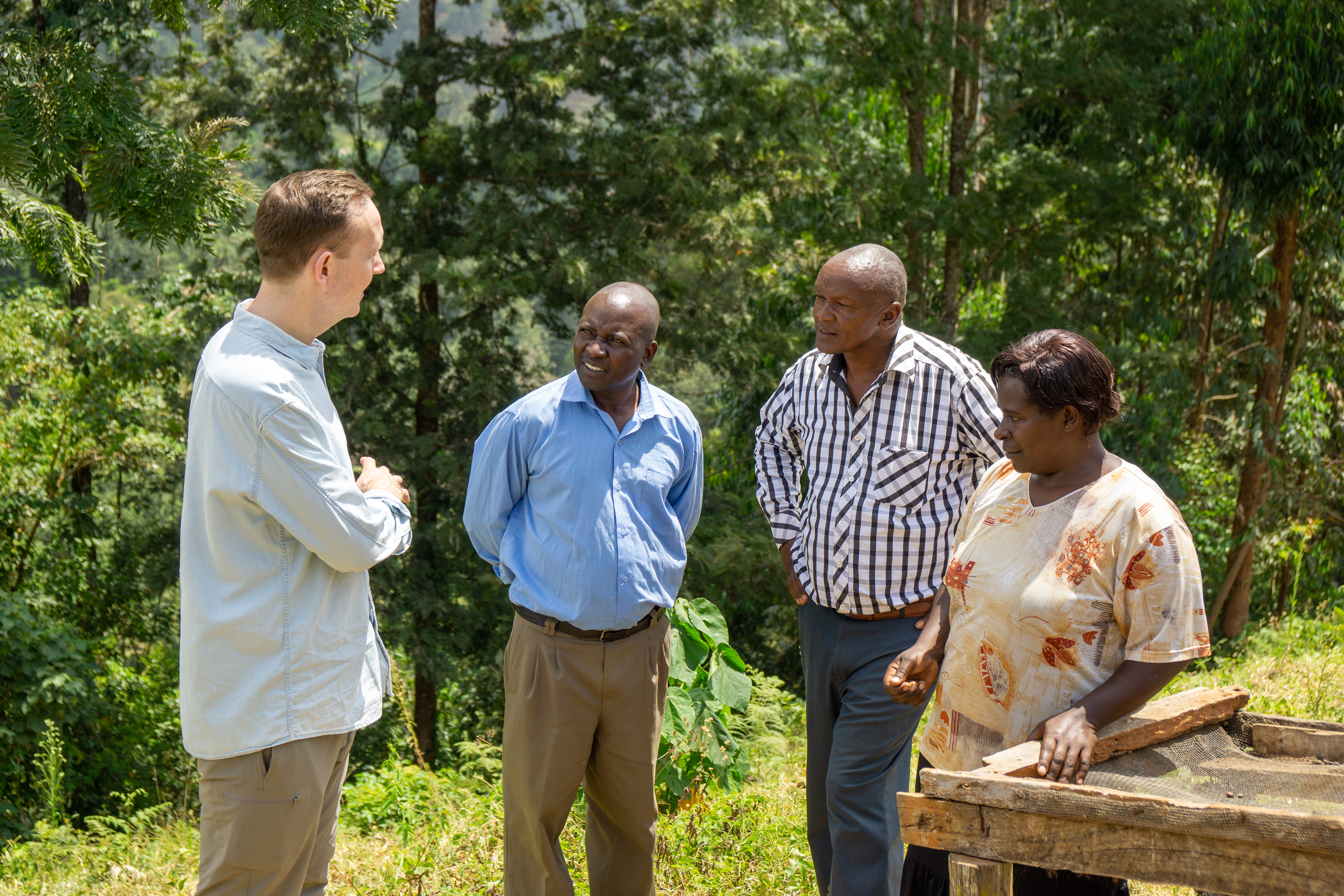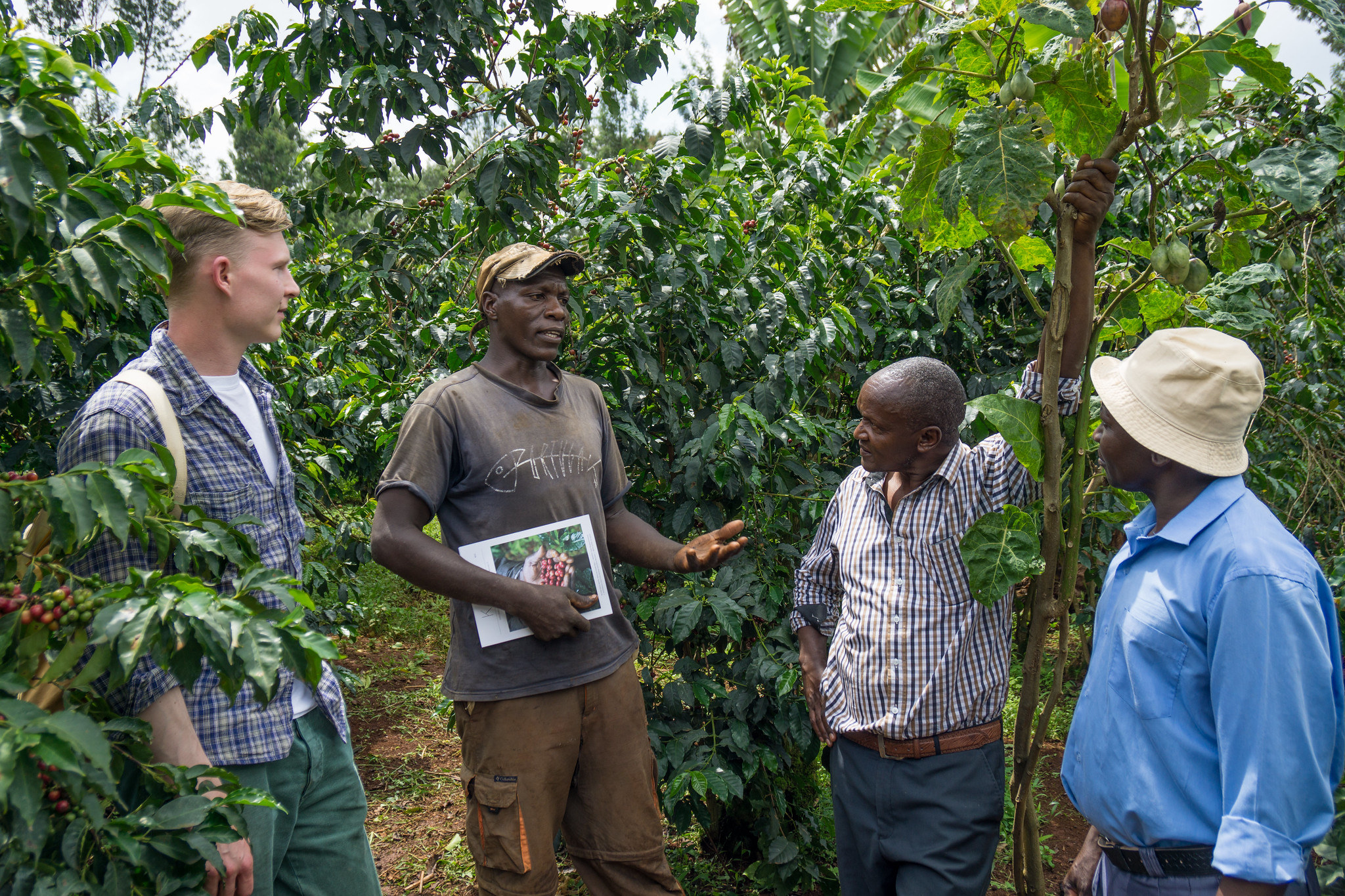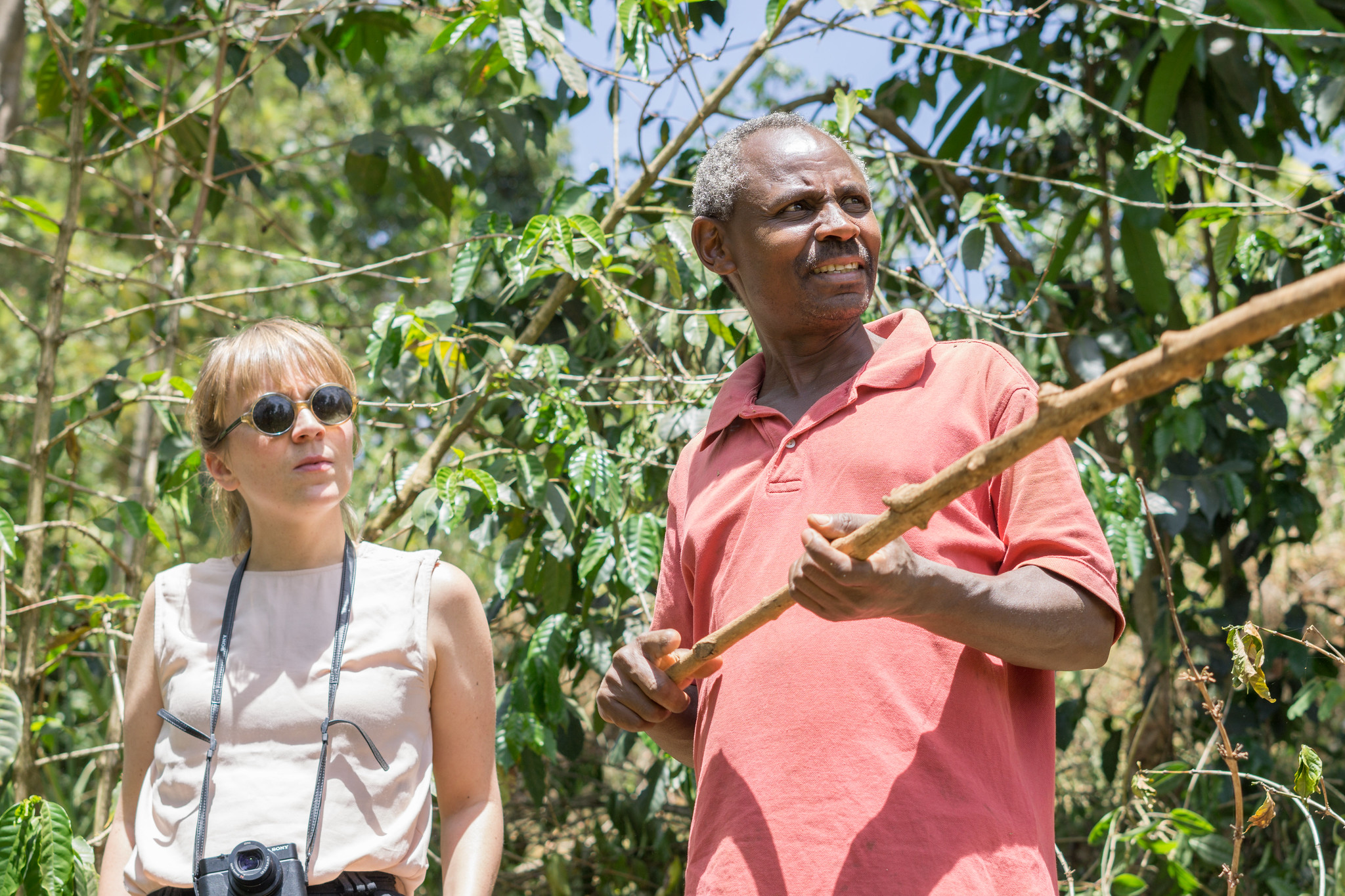Our first day started early as we had to beat the heavy morning traffic and head to the NKG/Tropical coffee lab to start tasting tables full of delicious Kenyan coffee. I must admit that I felt excited and a little nervous too, as I had never tasted so many coffees on one table and there was the pressure to trust your taste buds and select the best coffees.
As we arrived at the coffee lab the team of experienced cuppers had already made the first table of coffees ready for us and it was a perfect start - a table full of Kieni AA and AB out-turns.
We started with 8 out-turns AB and 8 out-turns of AA (with AA and AB representing the screen size of the coffee beans used in Kenya, when sorted after being harvested and processed), which had all been delivered to the dry mill in the weeks prior to our arrival.
Over the past years brewing this coffee for guests almost everyday, I had become somewhat accustomed how Kieni should taste like, but to my surprise this first cupping table proved me wrong as I was tasting raspberries and rhubarb, that we can always find when drinking Kieni, but there were cups with intense floral and tropical fruit notes, that I absolutely loved and had never experienced in this coffee before.
Klaus and I spent a good couple of rounds on this cupping table assessing all aspects of the coffee - acidity, sweetness, mouthfeel and aromas. It was a moment of pressure when at the end of the tasting we picked our favourite cups and each of us gave our reasoning behind it.
And trust me it is no easy task, when all 16 coffees on the table tasted as good as they did that day.
After a small lunch break we were taken on a small tour around the NKG/Tropical dry mill, where, after the coffee is delivered, it is sorted by screen size and density and also a large part of the defected beans are removed from the different out-turns.
It was amazing to see the scale of the operations here and that it can run at such high quality and still have room to expand more, which means that they will be able to mill the coffee at a higher quality and that hopefully means more income for the farmers for their hard work.
As we arrived back at the cupping lab, we had the second table in front of us and now we will be cupping our favourite coffees from the cupping earlier and other Kenyan coffees that could potentially be our second Kenyan coffee of this season. And it did not disappoint, the variety of flavors and aromas were amazing - from tropical fruit, to high citrus acidity and raspberry candy.
What I did not mention before is that all of the cuppings are blind, so we do not know and can't influence our decisions by knowing which coffee we are tasting. When we revealed the cups a couple of favourites turned out to be the coffees that we know very well - Tegu, Konyu, Karogoto and Ngurueri.
We finished our first day in the cupping lab and had selected Kieni out-turns and a couple of other coffees that we would like to taste again the next morning. The team at the cupping lab would re-roast all of the samples and make adjustments to the roasts based on our notes from the cupping, which was amazing, because the coffees kept tasting better and better the next day.
After two full days around the cupping table we packed our bags and jumped in the car to head up to the countryside and leave Nairobi for a coupleof days. Benson, who was our driver for this trip and a good friend of Klaus, picked us up and we were ready to go.
As were heading up north to visit Kieni in Nyeri, the landscape change dramatically - from far and wide flatlands where pineapples and rice are grown and hills full of mango trees to steep slopes with tea plantations and coffee farms.
I could not help but notice that nature around us is so full of life and different ecosystems. This time of the year usually is the dry period with little to no rain and that helps to dry the coffee efficiently and also gives the much needed stress to the coffee trees to draw as much nutrients as possible from the soil.
But this year is different, heavy rains have continued in Kenya this year making the harvest season a little more difficult as the coffees would take longer time to dry. It will also leave an impact on the next season's harvest, as the coffee trees are not put under so much stress that a dry period would bring.
As we turned off the main road I knew that we were getting closer to Kieni. It had just rained and the roads were somewhat invisible under the red puddles of mud. As we arrived at the Kieni factory Josphat and Charles were already waiting for us and they were beyond excited to see us again.
This was my first time visiting Kieni, but we have bought this coffee for 11 years now at Coffee Collective, so it was a special feeling to be amongst the few of us that have been fortunate to visit.
Josphat and Charles visited us in Copenhagen in November last year to see how we roast and brew the coffee they produce.
The harvest is almost done at this point, except for some Mbunis (lower grade, natural processed coffee) still on the drying tables.
We sat down with Josphat and Charles and shared what we had experienced on the cupping table. Josphat took out a big black notebook, where he has all of the out-turns written down and it was interesting to see that he indicated which of them were the best in his opinion, and to my surprise they were also our favourites from the cupping table.
It was nice to see that they are using the humidity meter that Klaus had brought a couple of years ago, the same we use in our roastery to monitor humidity levels in the green coffee beans. They were delighted with our thoughts from the cuppings and that we will be able to buy a little bit more coffee that the year before.
Josphat invited us to his house for lunch, but before that we wanted to meet some of the farmers of Kieni. We stopped at a small house that was surrounded by coffee trees and Klaus saw one of the farmers working hard cleaning out the weeds under the trees and pruning the branches. This was Joseph Ngari, a farmer Klaus tries to visit every year, and he was excited to see Klaus again.
He took us through the small plot of coffee trees to show how he cleans around the trees and gets rid of extra branches so the coffee trees are ready for the next harvest season. And it was rather impressive as the trees are full of blossoming coffee flowers and green cherries waiting their turn to become ripe.
It's remarkable to see the dedication that Joseph has, and it is well recognized as he is one of the example farmers in the area who help other farmers to increase their coffee quality.
We arrived at Josphats house for lunch where Josphat showed a huge photo album full of printed pictures from their trip to Copenhagen. It was a big pleasure to see how much this trip had meant to them. After enjoying a delicious lunch it was time for some coffee and no better way to finish a amazing day in Kieni than to drink some coffee from here.
Klaus brought some bags of and some equipment, I got the water ready and Josphats daughter Veronica was all ready to learn some tips and tricks about brewing a delicious cup of filter coffee.
It was time for us to hop back in the car and head back to our mountain lodge where we had been staying the last couple of days. We dropped off Charles in the nearest bus station and said our goodbyes for now. Josphat and his daughter were following us until a nearby town of Karatina and it was time to thank him and his family for hosting us and said goodbye until next time.
As we were heading back to Nairobi the next day, I couldn't help but think how eye opening and inspiring this trip has been. The amount of hard work that goes into producing coffee is hard to cope with coming from a different place in the world, so I can't wait to share this experience and more stories with our guests over a cup of coffee from Kieni very very soon.
You might also like
Related stories
Would you like to get our different coffees delivered directly to your doorstep? We've got you covered.
Address
Coffee Collective
Godthåbsvej 34B
2000 Frederiksberg
CVR: 30706595
Contact
mail@coffeecollective.dk
+45 60 15 15 25 (09.00-15.00)
Coffee and cookies
This site uses cookies.
Find out more on how we use cookies.
